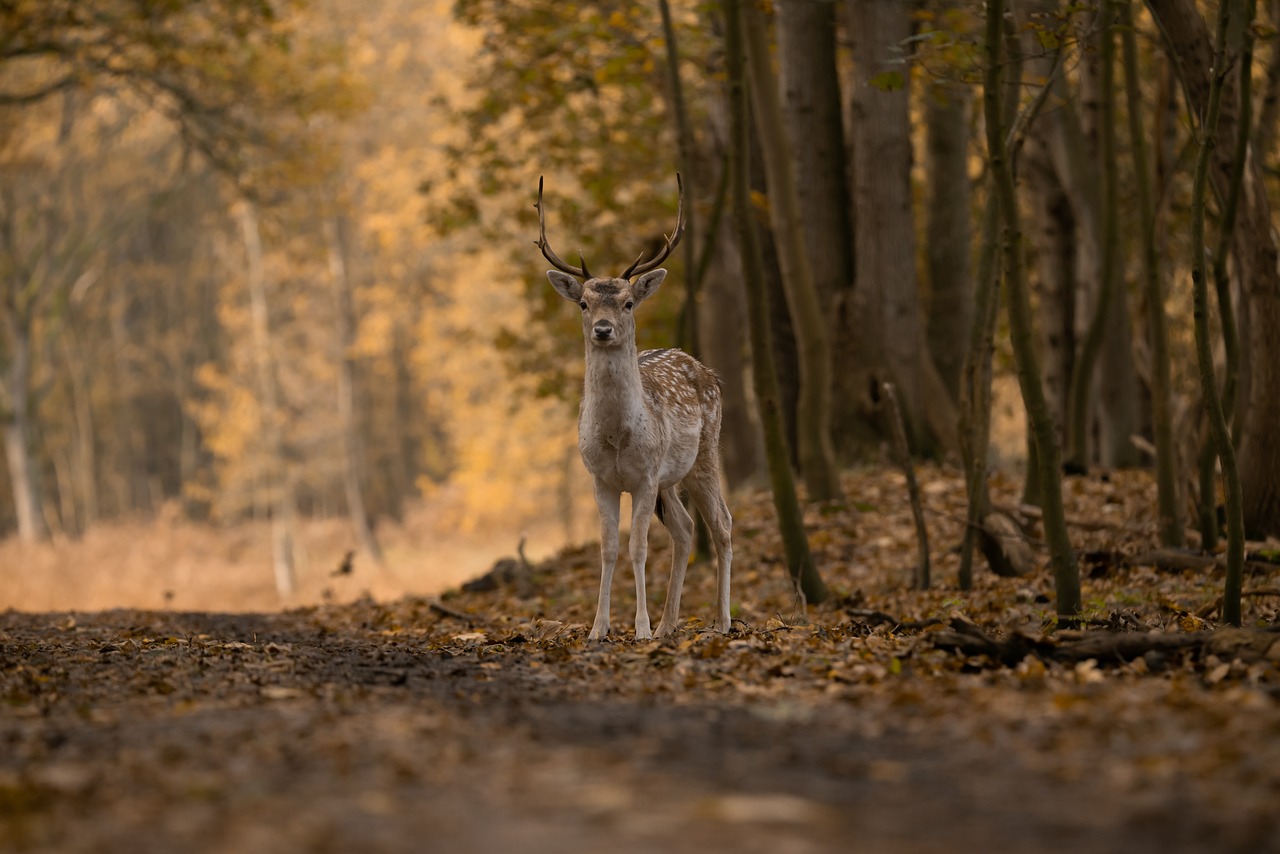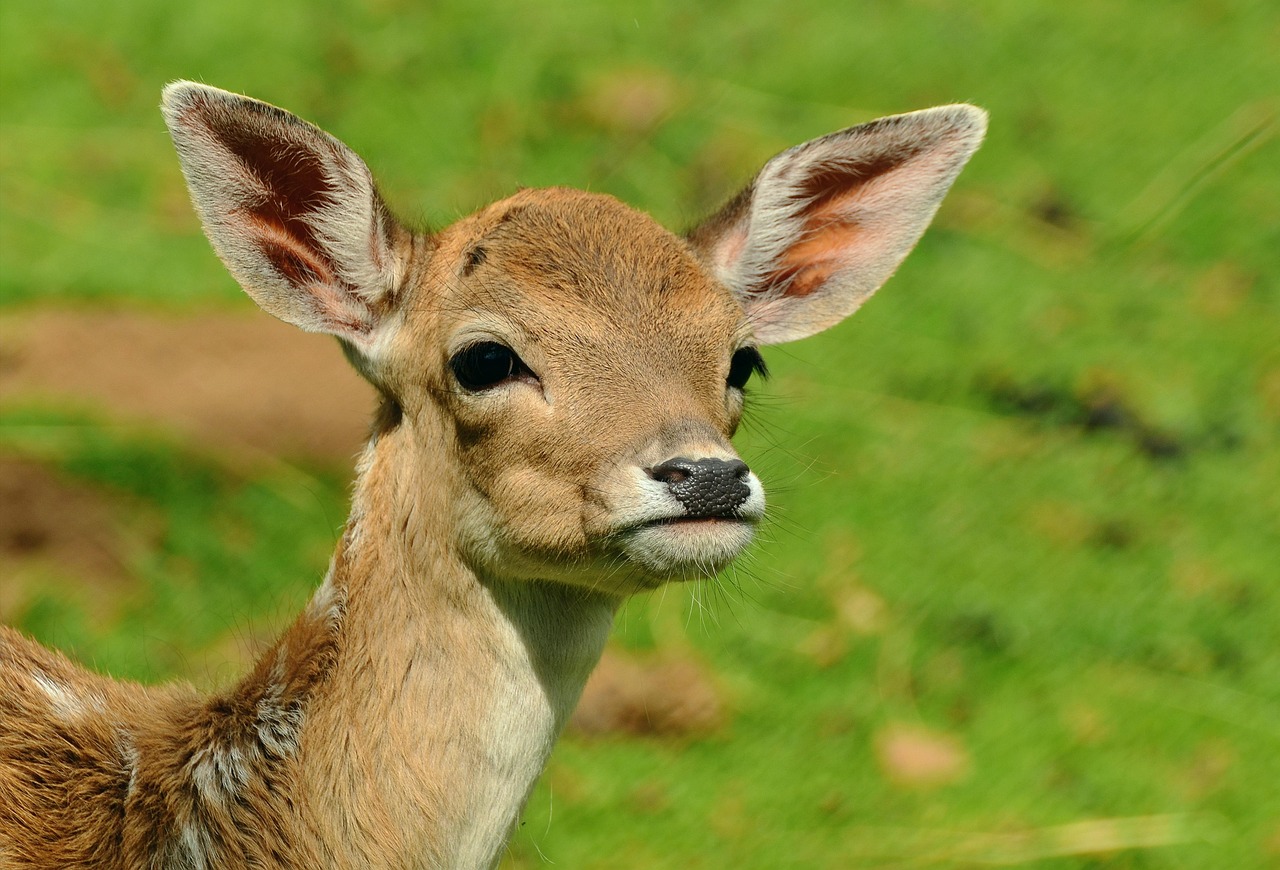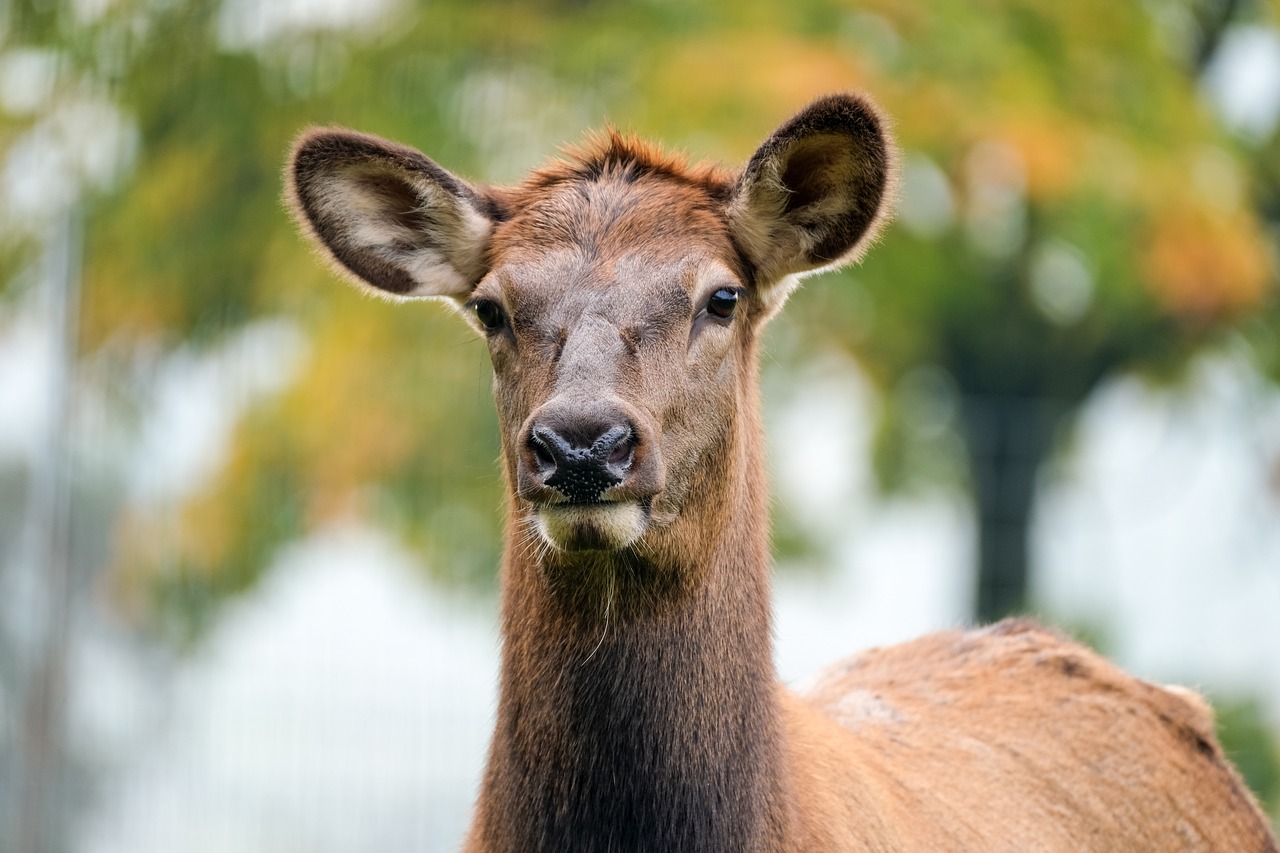Yes, deer are attracted to balsam fir trees. They are known to browse on the foliage and young growth of these trees, especially in late winter and early spring when other food sources are scarce.
Balsam fir trees (Abies balsamea) are a common sight in North America, particularly in the northeastern regions. These evergreen conifers thrive in cooler climates and are valued not only for their aesthetic appeal but also for their role in the ecosystem. As a vital part of the forest habitat, they provide shelter and food for various wildlife, including deer.
Understanding the relationship between deer and balsam fir trees is essential for forest management and conservation efforts. Deer are herbivores that primarily feed on a variety of vegetation. Their diet consists of leaves, twigs, fruits, and nuts. Balsam fir trees, with their soft needles and tender shoots, are a preferred choice when other food sources are limited. This attraction can lead to significant impact on balsam fir populations, especially in areas with high deer densities.
Characteristics of Balsam Fir Trees

Balsam fir trees are characterized by their narrow, conical shape and have a unique fragrance. They can grow up to 60 feet tall and thrive in well-drained, moist soils. The needles of balsam firs are flat, soft, and dark green, which makes them appealing to deer. Additionally, these trees can live for several decades, providing ongoing food sources over time.
Physical Features
The physical attributes of balsam fir trees contribute to their attractiveness to deer. The following table highlights some key features of balsam firs:
| Feature | Description |
|---|---|
| Height | Up to 60 feet |
| Needle Length | 0.5 to 1 inch |
| Shape | Conical and symmetrical |
| Bark | Thin and smooth, grayish-brown |
The soft needles of balsam firs not only serve as a food source but also provide shelter for deer during harsh weather conditions. The dense foliage acts as a protective cover, making these trees an essential part of their habitat.
Deer Feeding Habits
Deer have particular feeding habits that influence their attraction to certain plants. They tend to prefer tender shoots and leaves that are easy to digest. Balsam fir trees fit this criterion perfectly. During winter months, when food becomes scarce due to snow cover, deer might venture further into forested areas seeking out these evergreens.
Seasonal Feeding Patterns
Deer feeding patterns vary with the seasons. In spring, as new growth emerges, deer will actively seek out fresh shoots from balsam firs. In winter, they rely on the foliage that remains accessible above the snow. Understanding these patterns is crucial for managing deer populations and protecting balsam fir trees from overbrowsing.
Impact on Balsam Fir Trees
The attraction of deer to balsam firs can have significant implications for forest ecosystems. Overbrowsing can lead to stunted growth or even death of young trees. This can alter the structure of forest communities and affect biodiversity. Forest managers must consider these factors when creating conservation strategies.
In conclusion, the relationship between deer and balsam fir trees is complex and multifaceted. While balsam firs provide essential resources for deer, their browsing habits can pose challenges for the sustainability of these trees within their ecosystems.
Deer Behavior and Habitat Preferences
To understand why deer are attracted to balsam fir trees, it is essential to look at their behavior and habitat preferences. Deer are highly adaptable creatures that thrive in various environments, ranging from forests to grasslands. Their choices in habitat are influenced by food availability, shelter, and the presence of predators.
Preferred Habitats
Deer typically prefer habitats that offer a mix of open areas and dense cover. This combination provides them with the necessary food sources while also allowing them to escape from potential threats. The following points summarize the key habitat features that attract deer:
- Cover: Deer seek areas with dense vegetation, such as thickets or young forests, which offer protection from predators.
- Food Sources: They are drawn to regions where food is abundant, including areas with a diverse range of plants and trees.
- Water Availability: Proximity to water sources is crucial, as deer need to stay hydrated.
- Breeding Grounds: Open fields and meadows serve as suitable locations for mating and raising young.
Seasonal Habitat Shifts
Deer alter their habitats based on seasonal changes. During the summer months, they seek cooler, shaded areas where they can find ample food. As winter approaches, deer may move to lower elevations where the snow is less deep and food sources like balsam firs become more crucial.
This seasonal movement plays a significant role in their interaction with balsam fir trees. In winter, when food options dwindle, deer may migrate toward forests where balsam firs grow abundantly.
Factors Influencing Deer Attraction to Balsam Fir Trees
The specific characteristics of balsam fir trees make them particularly appealing to deer. These factors not only contribute to their preference but also impact the overall ecosystem.
Nutritional Value
Balsam fir trees provide essential nutrients that support deer health. The needles and young shoots contain various vitamins and minerals critical for deer development. Some key nutritional aspects are:
- Protein Content: Young shoots are rich in protein, which is vital for growth and reproduction.
- Minerals: Balsam fir foliage contains essential minerals that help maintain overall health.
- Digestibility: The soft texture of the needles makes them easier for deer to digest compared to tougher plant materials.
Shelter and Security
Balsam fir trees offer more than just food; they also provide shelter. The dense foliage of these trees can shield deer from harsh weather conditions, such as heavy snowfall or rain. Additionally, the cover helps protect deer from predators by providing hiding spots. This dual purpose enhances the attractiveness of balsam firs in deer habitats.
Management Strategies for Balsam Fir Conservation
Given the impact of deer browsing on balsam fir trees, various management strategies can be implemented to protect these vital resources. Effective management not only supports tree health but also promotes balanced wildlife populations.
Monitoring Deer Populations
Regular monitoring of deer populations is essential. By keeping track of deer numbers, forest managers can make informed decisions regarding hunting regulations and other population control measures. Techniques for monitoring include:
- Aerial Surveys: Conducting aerial surveys can provide a broad view of deer distribution and density.
- Trail Cameras: Using trail cameras can help track deer movements and behaviors in specific areas.
- Field Observations: Regular field checks allow for firsthand assessments of deer activity and browsing pressure on balsam firs.
Implementing Protective Measures
To mitigate the effects of overbrowsing, protective measures can be employed. These may include:
- Exclosures: Building fences around balsam fir saplings can prevent deer from accessing them until they grow tall enough to withstand browsing.
- Selective Harvesting: Harvesting mature balsam firs selectively can enhance growth opportunities for younger trees while decreasing competition for resources.
- Diverse Planting: Introducing a variety of native plant species can reduce the reliance of deer on balsam firs as their primary food source.
The Role of Balsam Fir in Ecosystems
Balsam fir trees play a significant role in their ecosystems beyond being a food source for deer. They contribute to soil stability, carbon sequestration, and overall biodiversity in forested areas. Understanding this role is crucial for effective conservation efforts.
Balsam firs provide habitat for numerous other wildlife species, including birds, insects, and small mammals. By maintaining healthy populations of these trees, it becomes possible to support a diverse range of flora and fauna within the ecosystem.
Ecological Benefits of Balsam Fir Trees

Balsam fir trees offer numerous ecological benefits beyond their role as a food source for deer. Their presence in forest ecosystems contributes to various environmental functions that support overall ecosystem health.

Soil Stability and Erosion Control
One of the critical benefits of balsam fir trees is their ability to stabilize soil. The extensive root systems of these trees help bind the soil, reducing erosion caused by wind and water. This stabilization is essential in maintaining the integrity of forested areas. Key points regarding soil stability include:
- Root Structure: Balsam firs have deep and wide root systems that anchor the soil, preventing landslides and sediment loss.
- Soil Fertility: As balsam fir needles decompose, they enrich the soil with organic matter, enhancing its fertility.
- Water Retention: The foliage of balsam firs helps slow down rainfall, allowing more water to permeate the ground rather than running off.
Carbon Sequestration
Balsam fir trees play a vital role in carbon sequestration, a process essential for combating climate change. These trees absorb carbon dioxide from the atmosphere during photosynthesis and store it in their biomass. Important aspects of carbon sequestration include:
- Long Lifespan: Balsam firs can live for decades, allowing them to store carbon over long periods.
- Forest Density: Dense populations of balsam firs enhance carbon storage capacity in forest ecosystems.
- Climate Regulation: By acting as carbon sinks, balsam firs help regulate climate patterns and reduce greenhouse gas concentrations.
Wildlife Habitat and Biodiversity
Balsam fir trees provide essential habitat for various wildlife species. The dense canopy and abundant understory create a rich environment that supports diverse forms of life. This biodiversity contributes to ecosystem resilience and stability.
Supporting Flora and Fauna
The habitat created by balsam firs supports numerous species, including birds, mammals, insects, and plants. Some noteworthy examples include:
- Bird Species: Many bird species, such as chickadees, crossbills, and woodpeckers, rely on balsam firs for nesting sites and food sources.
- Mammals: Besides deer, other mammals like snowshoe hares and squirrels inhabit balsam fir forests, benefiting from the cover and food provided.
- Insects: The trees support a variety of insects that play crucial roles in pollination and decomposition processes.
Impact on Forest Composition
Balsam fir trees also influence the overall composition of forests. Their presence can create microhabitats that promote plant diversity. This diversity enhances ecosystem function by:
- Providing Shelter: Smaller understory plants benefit from the shade provided by balsam firs, allowing them to thrive in otherwise harsh conditions.
- Facilitating Nutrient Cycling: The decomposition of balsam fir needles enriches the soil with nutrients that support various plant species.
- Encouraging Species Interactions: The interaction between balsam firs and other species fosters complex ecological relationships that contribute to overall biodiversity.
Challenges Facing Balsam Fir Populations
Despite their importance in ecosystems, balsam fir trees face several challenges that can threaten their populations. Understanding these challenges is crucial for effective conservation efforts.
Pest Infestations
Balsam firs are susceptible to various pests that can cause significant damage. Common pests include:
- Balsam Woolly Adelgid: This invasive insect feeds on balsam fir sapwood, leading to tree decline and death.
- Spruce Budworm: The larvae of this moth feed on the needles of balsam firs, causing defoliation and weakening trees.
- Other Insect Pests: Various bark beetles can infest weakened balsam fir trees, exacerbating their decline.
Disease Threats
Balsam fir trees are also vulnerable to diseases that can have detrimental effects on their health. Some notable diseases affecting these trees include:
- Root Rot: Fungal infections can cause root rot, leading to tree instability and death.
- Canker Diseases: These diseases can damage the bark, disrupting nutrient flow and harming tree health.
- Needle Cast: Fungal infections that affect needle health can lead to premature needle drop, impacting photosynthesis.
The Importance of Sustainable Forestry Practices
Sustainable forestry practices are essential for maintaining healthy balsam fir populations and protecting their associated ecosystems. These practices aim to balance economic needs with environmental stewardship.
Sustainable Harvesting Techniques
Sustainable harvesting techniques can help ensure the long-term viability of balsam firs while still meeting timber demands. These techniques include:
- Selective Logging: This method involves removing only certain trees while preserving the overall forest structure and health.
- Thinning: Thinning out overcrowded areas allows remaining trees to grow stronger and healthier.
- Replanting: After logging activities, replanting balsam firs can help maintain population levels and ecosystem integrity.
By implementing these sustainable practices, forest managers can help protect balsam fir trees and support the diverse wildlife that depends on them for survival.
Community Engagement and Education
In addition to sustainable forestry practices, community engagement and education play vital roles in the conservation of balsam fir trees and their ecosystems. Raising awareness about the importance of these trees and their relationship with deer can foster better stewardship among local communities.
Public Awareness Campaigns
Public awareness campaigns can educate residents about the ecological significance of balsam fir trees. These campaigns can cover topics such as:
- Understanding Ecosystems: Teaching community members about the role of balsam firs in supporting diverse wildlife and maintaining forest health.
- Responsible Wildlife Management: Informing the public about the importance of managing deer populations to prevent overbrowsing and protect tree health.
- Tree Planting Initiatives: Encouraging community members to participate in tree planting events to help restore degraded areas and enhance local ecosystems.
Collaboration with Local Organizations
Collaboration with local environmental organizations can amplify conservation efforts. Partnerships can lead to:
- Workshops and Seminars: Hosting educational events that focus on sustainable forestry and wildlife management.
- Volunteer Programs: Organizing volunteer opportunities for tree planting, habitat restoration, and monitoring wildlife.
- Research Initiatives: Supporting local studies on the health and viability of balsam fir populations and their interactions with deer.
The Role of Technology in Conservation
Advancements in technology offer innovative solutions for monitoring and managing balsam fir populations and deer interactions. Utilizing technology can enhance conservation strategies significantly.
Remote Sensing and GIS
Remote sensing and Geographic Information Systems (GIS) can be employed to analyze forest health and deer habitats. This technology provides valuable data for:
- Mapping Forest Density: Identifying areas with high balsam fir concentrations and assessing their health.
- Tracking Deer Movements: Understanding deer migration patterns through GPS collars or camera traps, aiding in effective management decisions.
- Monitoring Ecosystem Changes: Observing changes in forest composition or health over time to inform conservation strategies.
Drones in Forest Management
Drones have emerged as valuable tools in forest management. They allow for:
- Aerial Surveys: Conducting surveys of balsam fir stands and assessing overall forest health from above.
- Damage Assessment: Quickly identifying areas affected by pests or diseases for timely intervention.
- Reforestation Efforts: Using drones to distribute seeds in hard-to-reach areas, enhancing replanting efforts.

Final Thoughts
The interaction between deer and balsam fir trees is a critical aspect of forest ecosystems. While deer benefit from the nutritional resources provided by these trees, unmanaged browsing can threaten their health and long-term viability. Understanding this relationship is essential for implementing effective management strategies that protect balsam firs while ensuring healthy deer populations.
Sustainable forestry practices, community engagement, and technological advancements all contribute to the conservation of these vital trees. By promoting awareness and collaboration, communities can play an active role in preserving balsam fir forests for future generations. Ultimately, a balanced approach that considers both wildlife needs and environmental health will lead to thriving ecosystems where deer and balsam firs can coexist harmoniously.
The journey toward effective conservation requires dedication from all stakeholders involved, including forest managers, local communities, researchers, and policymakers. By working together, it is possible to create a sustainable future for balsam fir trees, the wildlife that depends on them, and the rich ecosystems they support.
